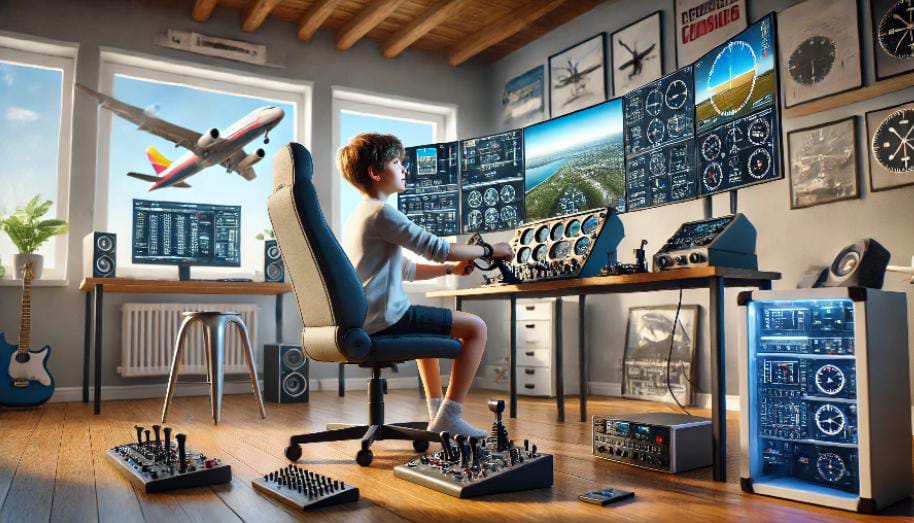Setting up a home cockpit for flight simulation is an exciting venture that offers the thrill of flying without leaving the ground. Whether you’re a seasoned flight simulator enthusiast or a beginner looking to take your experience to the next level, enhancing your home cockpit setup can significantly improve your immersion and enjoyment. In this guide, we’ll explore practical ways to upgrade your flight simulator setup to achieve a more realistic and professional environment.
1. Invest in Quality Hardware
The foundation of any exceptional home cockpit setup lies in the quality of the hardware. While starting with a basic joystick and keyboard might be sufficient, investing in specialized flight controls can drastically enhance your experience. Consider purchasing a yoke, rudder pedals, and a throttle quadrant that mimic the controls of real aircraft. These tools provide a more tactile and authentic flying experience, helping you develop a better feel for the plane you’re piloting.
2. Upgrade Your Avionics
Avionics are the heart of any cockpit, providing critical flight information and control. Upgrading your avionics can significantly boost the realism of your flight simulator setup. One essential upgrade is the GNS 530. This versatile GPS navigation system is widely used in real aircraft and is available in many flight simulators as an add-on. The GNS 530 offers advanced navigation features, including real-time GPS, waypoint management, and detailed maps, making your simulated flights more accurate and engaging.
3. Optimize Your Visual Experience
Visuals play a crucial role in the immersion of your flight simulation experience. Upgrading your display setup can make a significant difference. Consider using multiple monitors to expand your field of view, giving you a more comprehensive perspective of your virtual cockpit. Alternatively, investing in a high-resolution curved monitor or even a VR headset can provide an incredibly immersive experience, allowing you to see your virtual environment with unprecedented clarity and depth.
4. Enhance Your Audio Setup
The sounds of flight are just as important as the visuals. To truly enhance your home cockpit, you should invest in a high-quality audio system. Surround sound speakers or noise-canceling headphones can immerse you in the sounds of engine roars, wind whistles, and air traffic control communications. Some enthusiasts even go as far as to set up tactile transducers, which allow you to feel the vibrations of your aircraft, adding a new dimension to your flight simulator setup.
5. Incorporate Realistic Flight Panels
Adding physical flight panels to your setup can bring your home cockpit closer to a real aircraft. These panels replicate the look and function of various aircraft controls, such as autopilot, communication radios, and switch panels. Many of these panels are plug-and-play, meaning they’re easy to set up and integrate into your existing system. Having physical controls at your fingertips adds to the authenticity and allows you to interact with your virtual aircraft in a more hands-on manner.
Enhancing your home cockpit setup is a rewarding journey that deepens your flight simulation experience. By investing in quality hardware, upgrading your avionics, optimizing your visuals and audio, incorporating realistic flight panels, and maintaining your system, you can create a home cockpit that rivals professional setups. With these upgrades, your next virtual flight will be more immersive and enjoyable than ever before.






